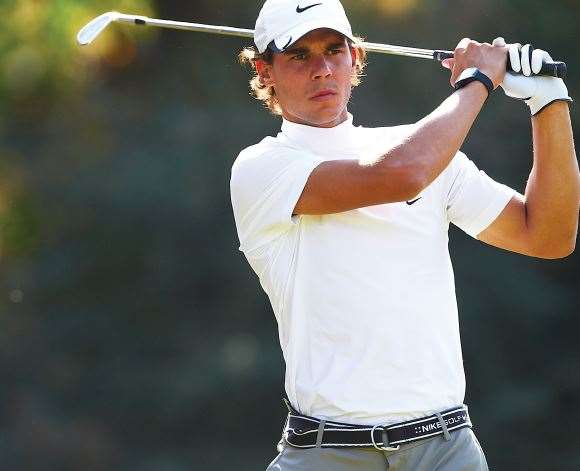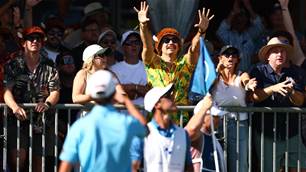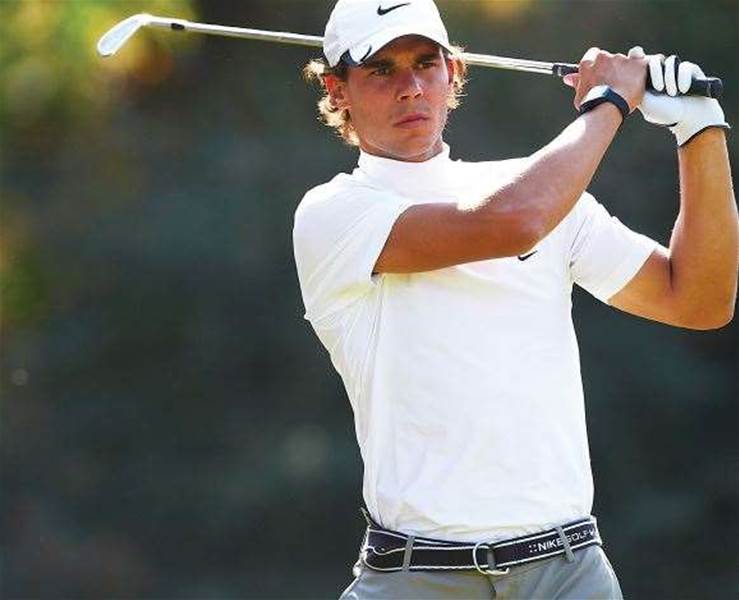Thanks to the wider world of sport, the fortunes of our great tennis and golf championships couldn't be more different.
Thanks to the wider world of sport, the fortunes of our great tennis and golf championships couldn't be more different.
 When an injured rafael nadal thought about giving up tennis for golf, he wasn’t kidding. Image: Getty Images
When an injured rafael nadal thought about giving up tennis for golf, he wasn’t kidding. Image: Getty ImagesThe seasonal drift from one Australian Open (golf, that is) to the more esteemed one (the tennis, obviously) always makes your columnist wonder about the weird dynamics that can turn a mere sporting contest into an “event”. The Aussie Opens share a name, but their relative status is vastly different. And why that’s the case isn’t as logical as it seems.
The tennis Open has always had greater historic prestige within its own sport. But the golf Open once had its own big-league pretensions in the late 1970s, underwritten by Kerry Packer to the status of the world’s second-richest tournament, and big names such as Jack Nicklaus and Greg Norman followed. For a while, it earned the somewhat dreaded title of “fifth Major”. Alas, there was no Howzat-style docudrama to be had – Packer eventually withdrew, and the Open was progressively dwarfed by a global explosion in golf money. Presently, the total purse at the Open is $1.5 million, while the winner at a run-of-the-mill US PGA Tour event will make that all by himself.
Tennis, by contrast, has traced an upward curve since it made its move in the mid-1980s to Melbourne Park and its mid-January date. It has reached the point where it thoroughly owns the nation’s attention for a fortnight. It’s testimony to the power of Melbourne’s great culture of fandom, but it’s also because the Australian Open tennis might be the most cosmopolitan of the nation’s great sporting events. This year, it will pay out a record $30 million in total prize money, a remarkable figure by the fund-raising standards of Australian sport.
The proverbial extraterrestrial landing and observing an Aussie summer would surely conclude that tennis was vastly more valuable socially and financially than golf. If ET could get past why we bothered watching all that grunting and putt-reading in the first place, it would then have to figure out why that conclusion was wrong.
Despite having a world-class tennis tournament, the nation produces far more elite golfers than tennis players. For a young sportsman, it’s an economically optimal choice – the common gripe of the tennis pro is how much less they earn compared to the golfers, in a sport where careers are shorter. Tennis top-tenner Janko Tipsarevic was blunt in a column for a tennis website last year: “In golf, look at how many players made more than $1 million in prize money last year (94) compared to tennis (15). I feel that’s ridiculous.” When Rafael Nadal, in the throes of injury a few years ago, said he contemplated giving up tennis for golf, it really seemed like he wasn’t kidding.
Fundamentally, we have an ultra-lucrative tennis Major that trades on the country’s deep history in the game, but is ultimately staged for the reward of talented foreigners. By contrast, our discount national golf championship is contested by genuinely world-class Australian players, who have to seek out vastly greater rewards in tournaments in other countries. What they both speak to is the idea that the “event” itself has a character that goes beyond its locale.
Think of it like a Bond film – the setting can vary, but it’s all just backdrop for the gunfights and chase scenes. At the top level of sport, a world event doesn’t necessarily mean an event, or a series of them, held around the globe anymore. Rather, it’s come to mean a place where the world’s talent converges, under a brand that provides a convenient handle for people to latch onto. It’s basically what the English Premier League has become – a host body for the highest-priced footballers in the world, with the veneer of the historic attachments between clubs and communities.
The PGA Tour feels much the same, as does the Australian Open tennis. It harkens back to our great tennis past, but its future seems contingent on its ineffable sense of spectacle, rather than our attachment to the sport itself. It’s why anxiety about a player boycott over revenue, or a huge-money Asian move, hovers in the background. If it were to happen, another Australian Open could learn just how dreaded the term “fifth Major” can be.
Related Articles

Lightning and low rounds at NSW Women’s Open

"More pointless than Pokémon": Tomorrow's Golf League critiqued, and roughly













